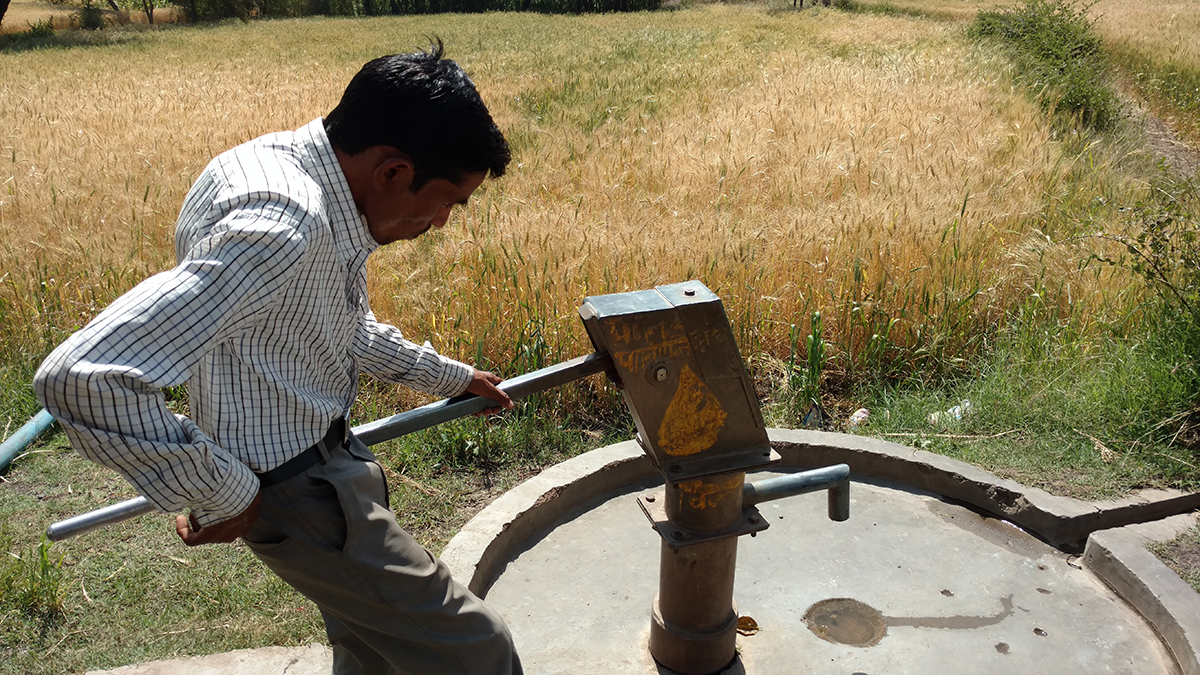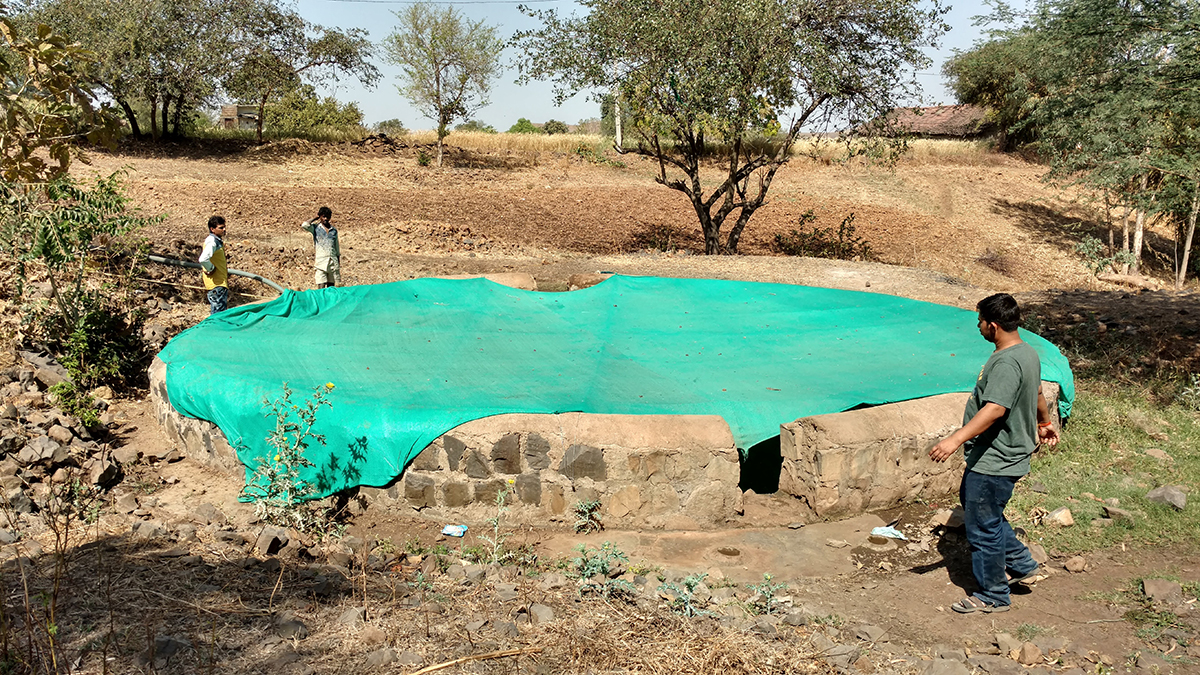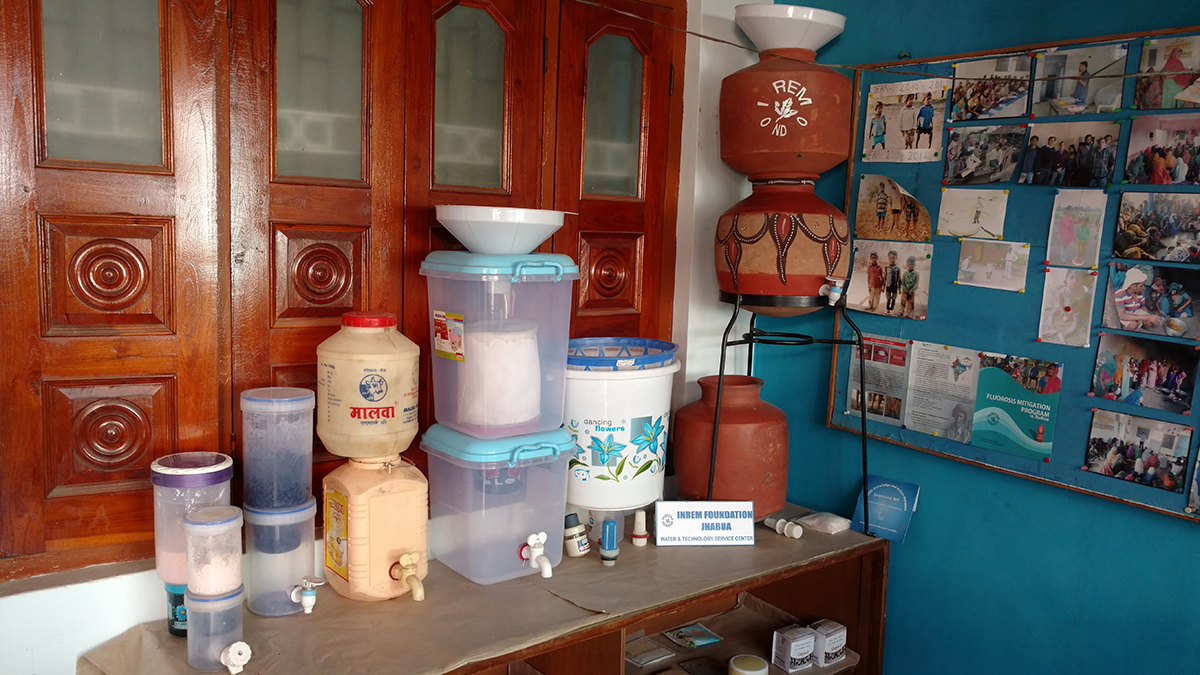INREM Foundation: Documenting efforts towards fluorosis mitigation and developing a system for scaling out
INREM Foundation
The INREM foundation was started in the late '90s by a group of professors from the Institute of Rural Management, Anand. In its current form, for just over the past decade, the team has been working on a number of issues related to water quality and health, with a special focus on the issue of the mitigation of the ill-effects of fluoride namely the different kinds of fluorosis. In early 2017, when I first started work with them, the team was directly working in Jhabua, Madhya Pradesh, and along with partners from the Fluoride Knowledge and Action Network (FKAN), they were involved in a number of other fluoride affected regions across India.

The Issue of Fluorosis in a Nutshell
Fluoride is a naturally occurring compound found as a salt in various deposits deep in the Earth. Upto a certain measure of parts per million (ppm), fluoride has a positive effect on skeletal strength, but beyond that limit it can be highly detrimental to the body. Coupled with malnutrition, the constant consumption of water with fluoride based salts dissolved in it, can cause fluorosis of various kinds.
The treatment at its simplest requires regular access to clean drinking water as well as a nutritious diet comprising the right balance of calcium, vitamins and proteins. In Jhabua, Madhya Pradesh, the issue affects rural populations especially in 'tribal' villages/neighborhoods who are historically poorer and thus lack access to both water and nutrition.

The Problem/Brief
INREM first got involved in Jhabua, about eight years ago (~2009), with what was initially research studies, but very soon in the hands of the first researchers, Induda and Sunder, turned into an attempt to respond to the effects that they had observed. In Jhabua, the disease, is particularly brutal on young children, leaving them with severe physical and mental impediments.
What followed was the setting up of the 'Fluorosis Mitigation Center (FMC), Jhabua' which started experimenting with the approach that could reverse the effects of fluorosis or atleast help those suffering to mitigate the effects. Over the last eight years, that approach through a process of constant exprimentation and innovation has led to a lot of knowledge that currently was in a set of documentation across platforms and formats, and that was largely locked in the heads of the various teammembers.

Process
When an organisation is as focussed on working in the field as INREM is, it is quite a challenge to figure out for oneself what the 'replicable' approach is. The first breakthrough in the project, came through a workshop. In this workshop the question posed to the team, was not to talk about what had happened, but if they had to go to a district and start an FMC from scratch what would they do? How could they replicate the level of success they had in Jhabua in eight years in a matter of two or three years?

At the end of the workshop, we had a framework for the steps to follow at the district level, at the level of the habitation, for each household and for patients. But while most toolkits like this stop at this step, we pushed this a bit further.
We have a firm belief that when replicating such efforts, it is near impossible to replicate exactly. The idea then is that an individual who is reading about a step, for example, a survey of doctors in the district, will not be able to follow the process exactly in the same way. Each location with its myriad differences needs to be reflected in the solution, and thus we needed to bring in stories from the team in Jhabua as to what it actually takes to mitigate the effects of fluoride in a community.
Following the workshop, I spent time with the team in Jhabua interviewing them for each part of the process recording their experiences, what didn't work, what they had to change from location to location to make things work and so on.

Outcome
At the end of this project, we compiled a document that laid out in detail the steps that would need to be followed to replicate the FMC, Jhabua approach, with the stories that show how each step actually played out. The document was one part of the process by which today INREM and the FKAN has transitioned to the larger mandate of the 'Water Quality Network' and consolidated and scaled its approach across six states, and over a dozen districts as of October 2019.
This take on the toolkit, itself grew from previous research and writing that I had pursued a couple of years prior. Since then I built off of this work, with M4ID (now Scope Impact) while thinking through strategy for work on the Lab.Our Ward project. And that led to the founding of Ooloi Labs, a company focussed on creating socio-technical solutions for the social sector. The first product is focussed on building a better framework and tools for organisations to build repositories of knowledge that help practitioners and implementors.